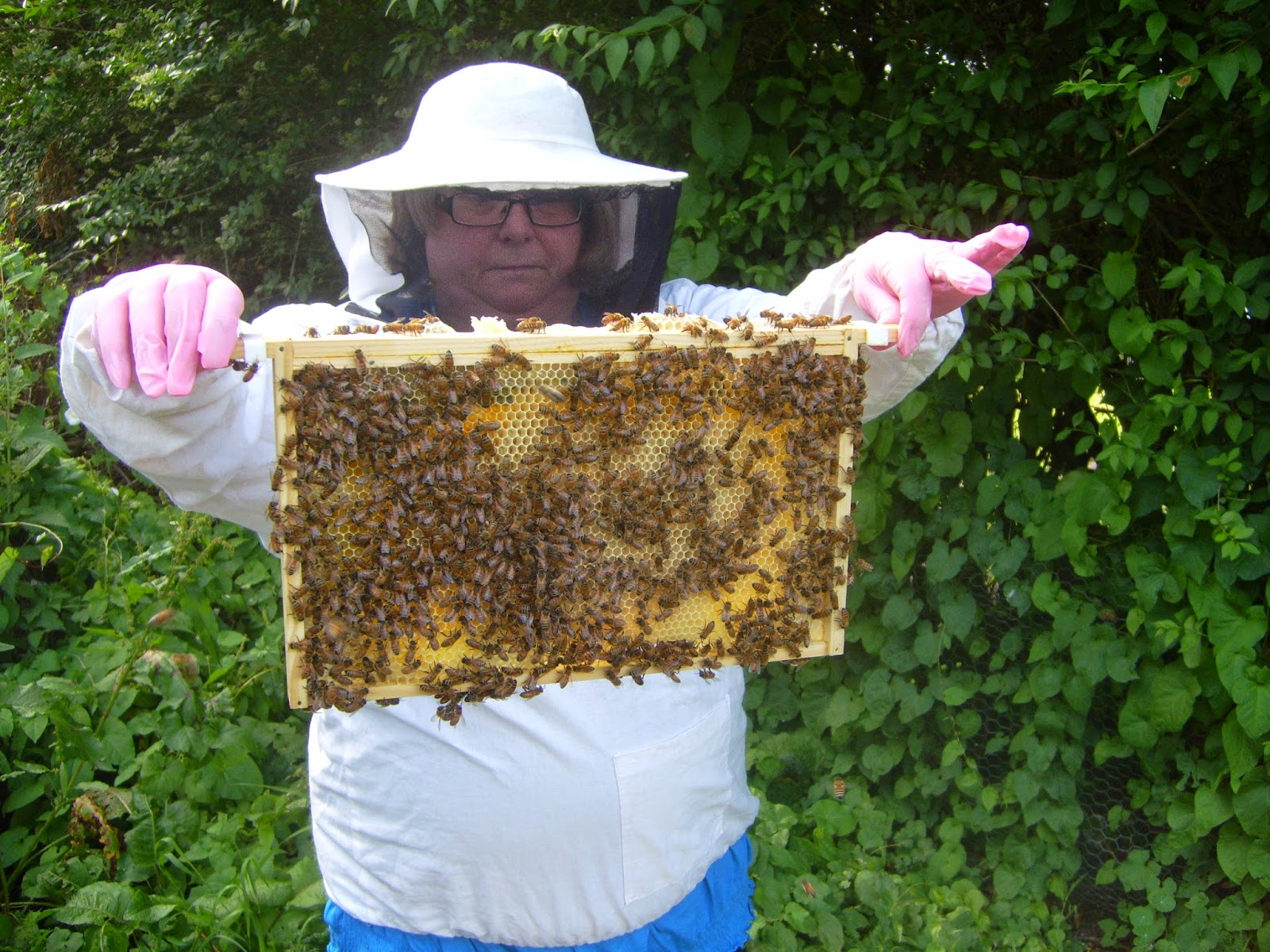The bees are supposed to be inspected at least every nine days to make sure that the colony isn't running out of space and likely to swarm, but due to poor weather this inspection has spilled over onto day 12.
 |
| Opening the hive |
Diane very kindly agreed to help once again, so suited and booted the two ladies opened up the hive and got to work.
On opening the hive it was obvious that there was not major change from last time.
 |
| Frame five - lots of bees but no real comb as yet |
The bees were clustered around frames six through nine as before, but when Angela lifted out frame five there were a lot of bees on it, but only the beginnings of comb.
This is a good sign as it means that they are getting ready to expand.
 |
| Frame six |
I have been watching the bees over the past week every time I have been on the plot, and they have certainly been busy.
We have still got the entrance reducing block in place and sometimes the bees have been queuing up to get into the hive.
Some of the returning bees are obviously carrying loads of pollen as the baskets on their legs are full of bright yellow and white pollens, destined to be used to feed the growing brood.
One of the objectives for today was to try and locate the queen, and Angela spotted her on the outside of frame six.
 | |
| Close up on the queen - middle of the picture, one third in from the right with no banding |
 |
| Frame seven showing lots of activity |
She wasn't marked, which means that either she is a new, young queen (which fits with there being no evidence of her laying until day 17) or an old queen from a wild colony, or from a colony that hasn't been looked after properly.
 |
| Frame 8 |
Marking queens is done for a couple of reasons - firstly, it lets you know how old the queen is as each year a different colour is used - this year is green - and secondly, it makes her much easier to spot when you are scouring the frames to find her.
Unfortunately Diane hadn't brought her queen marking gear out so we had to leave her unmarked for now, but at least we had seen her at last.
 |
| Frame nine with loads of mutant comb |
The fact that she was on the outside of frame six is hopefully a good sign as the only reason for her to be there is to lay eggs, and she should only be there if the other frames are full.
If she has been laying strongly since she was mated then soon we should start seeing an increase in the colony size.
Workers take 21 days to hatch from being laid, and so assuming that the earliest she started laying was right after the second inspection on day 10 today was the very earliest that we could expect to have new bees.
 Italian bees such as we have are supposed to be prolific layers, so hopefully we will see a huge increase in numbers at next weekend's inspection.
Italian bees such as we have are supposed to be prolific layers, so hopefully we will see a huge increase in numbers at next weekend's inspection.A queen can lay up to 2,500 eggs a day, so over seven days we may have a few thousand additional workers to help build the comb for the colony to expand and survive.
 |
| Frame ten being replaced |
After this they are on their own.
